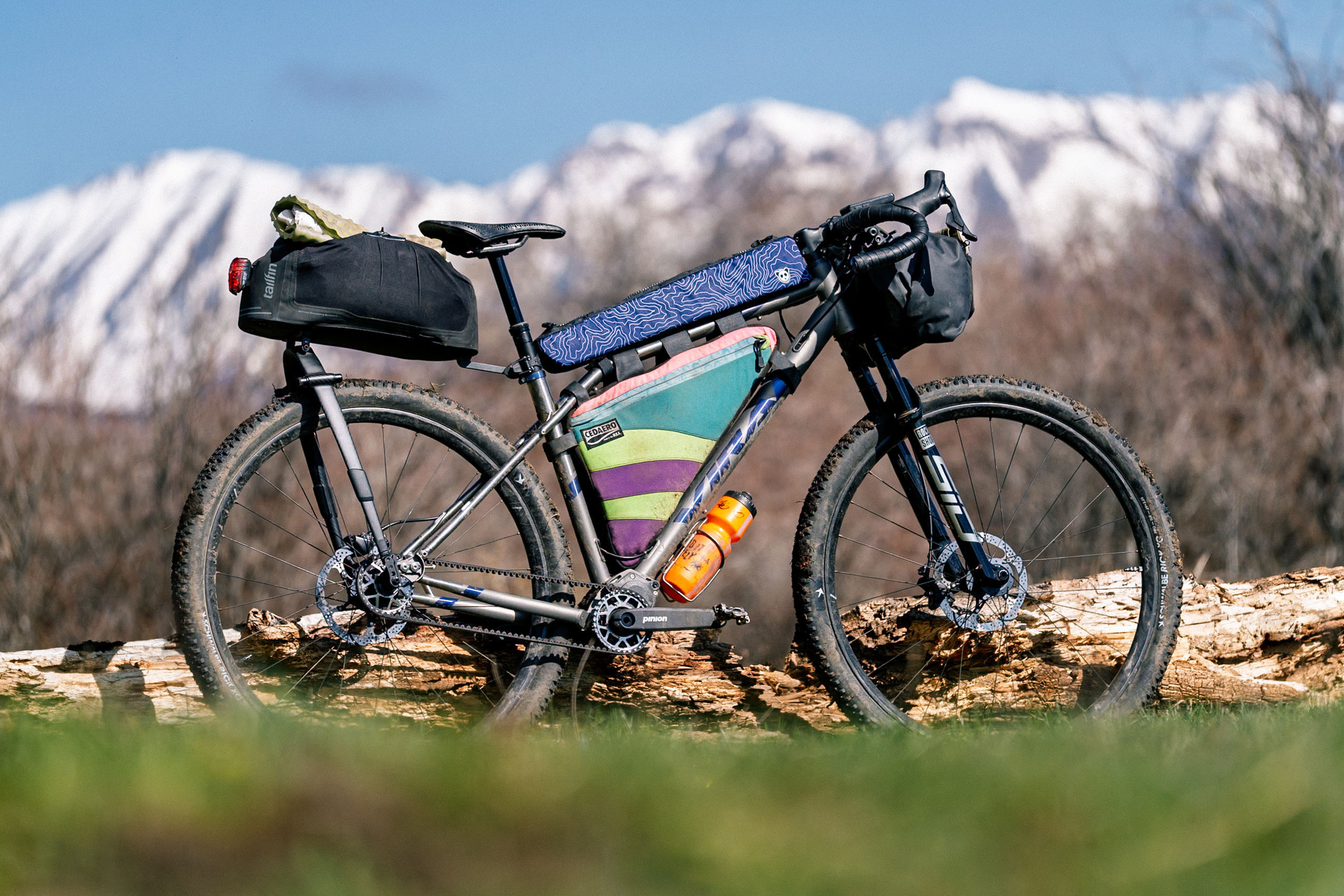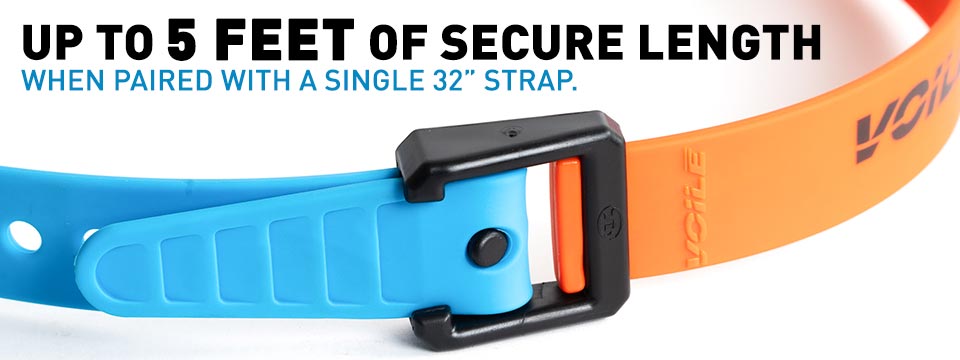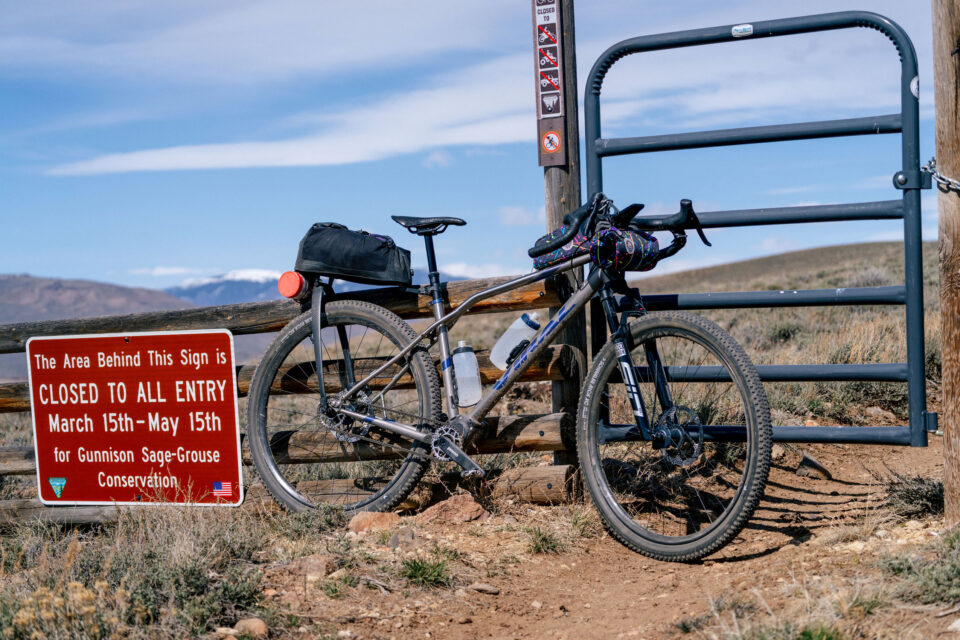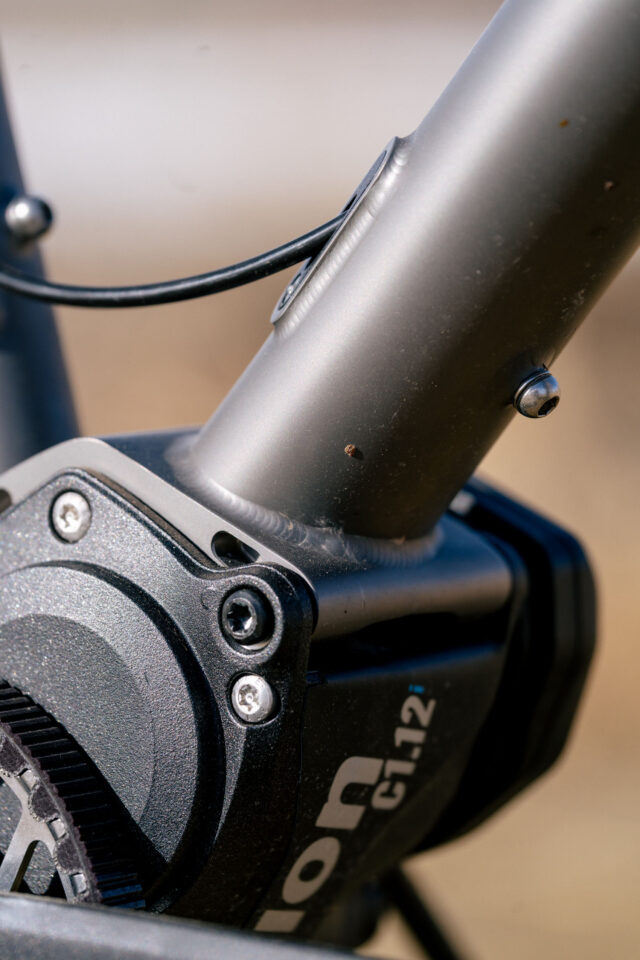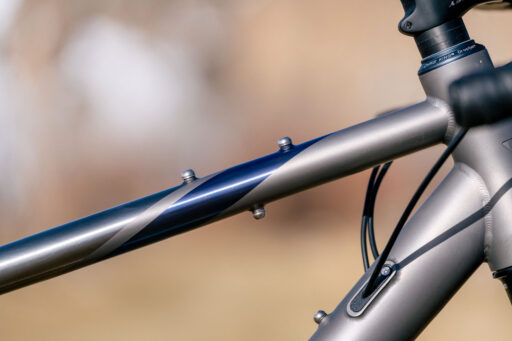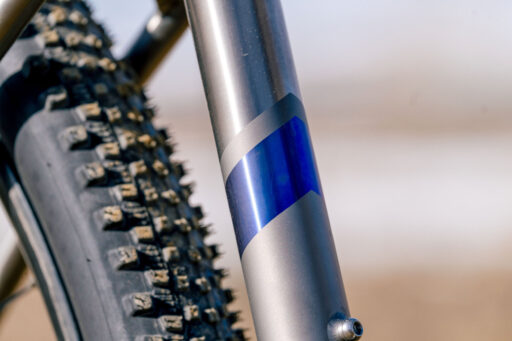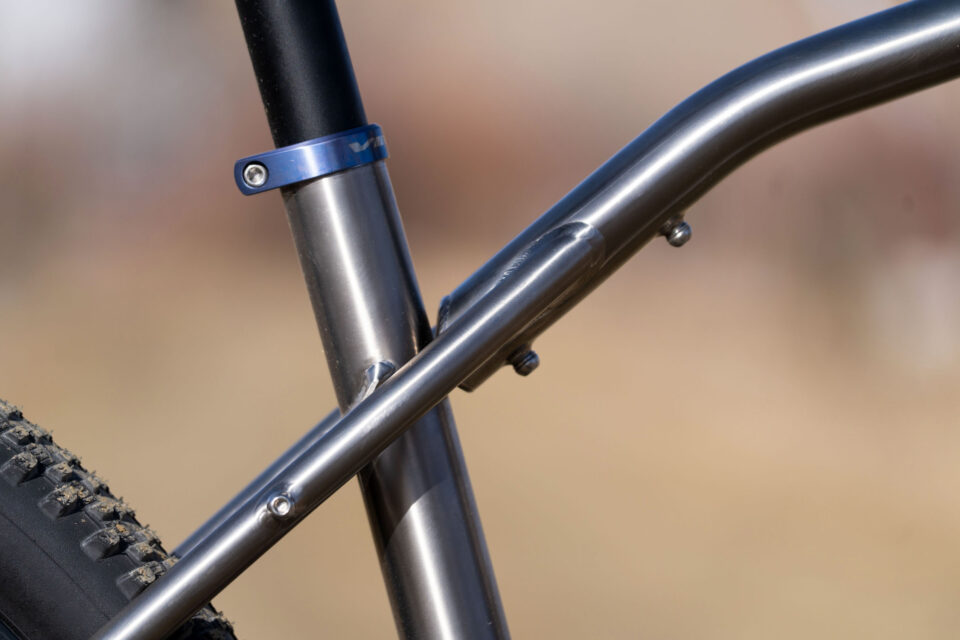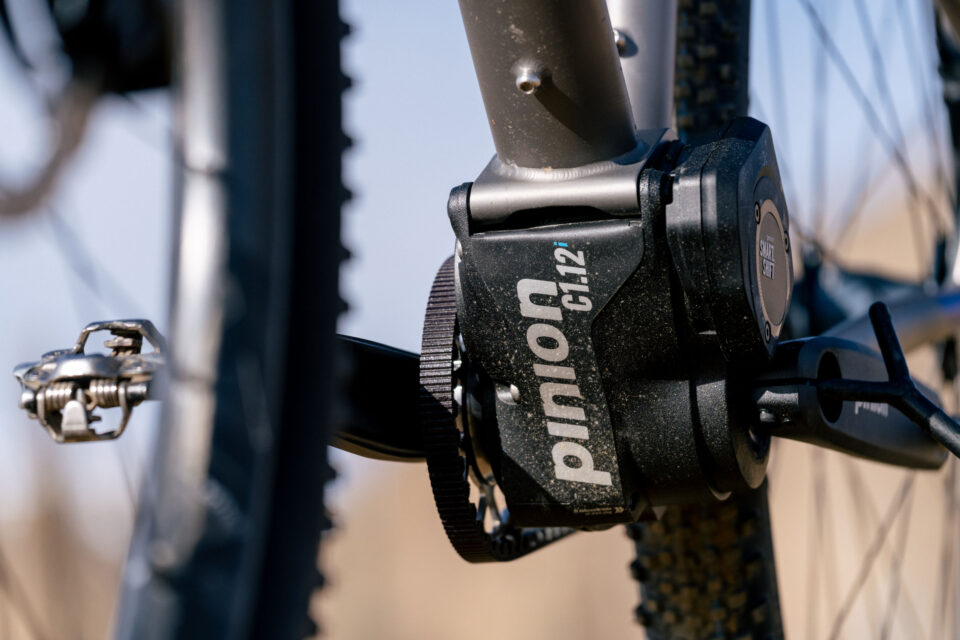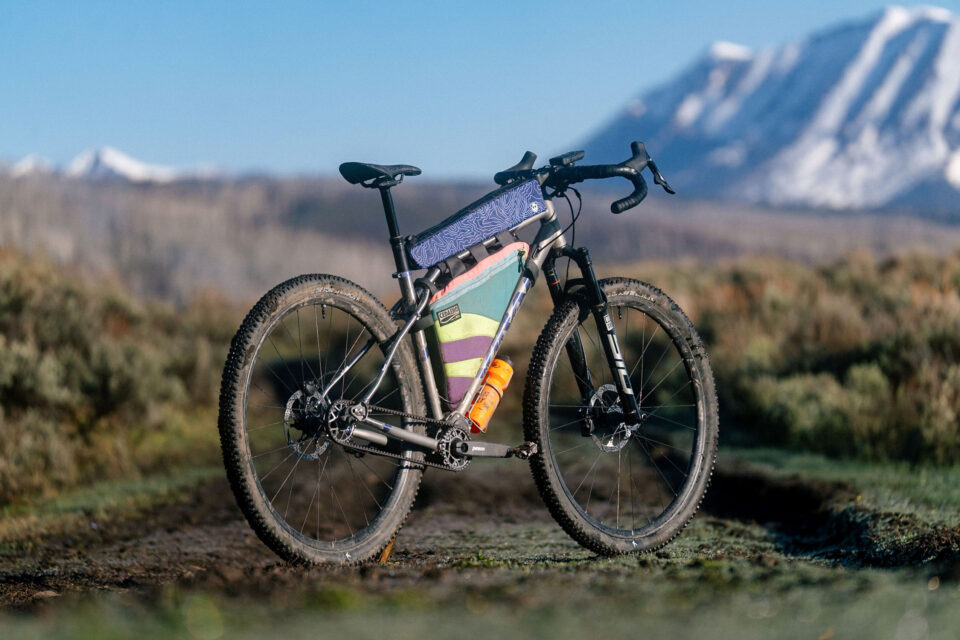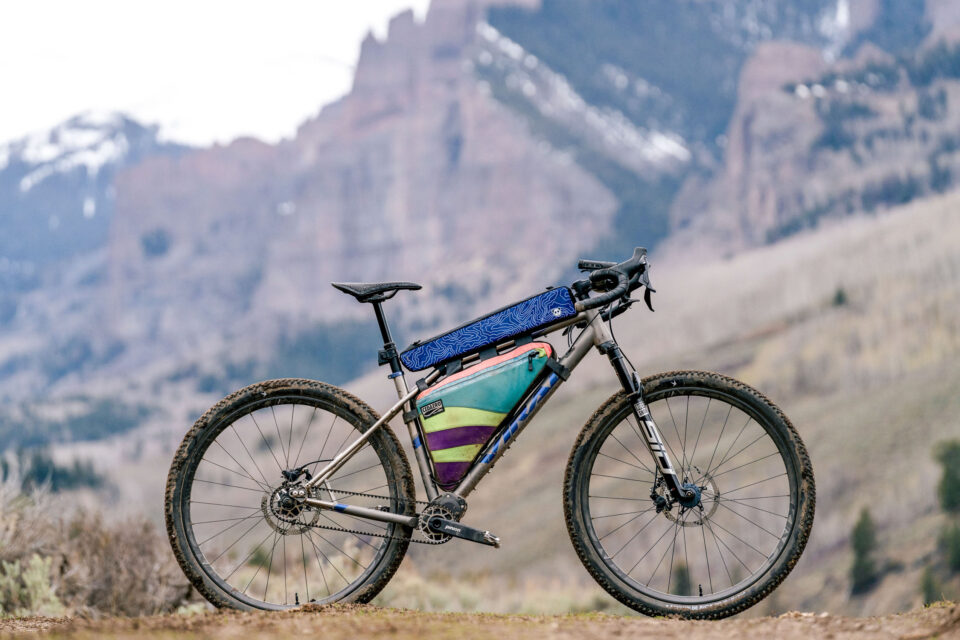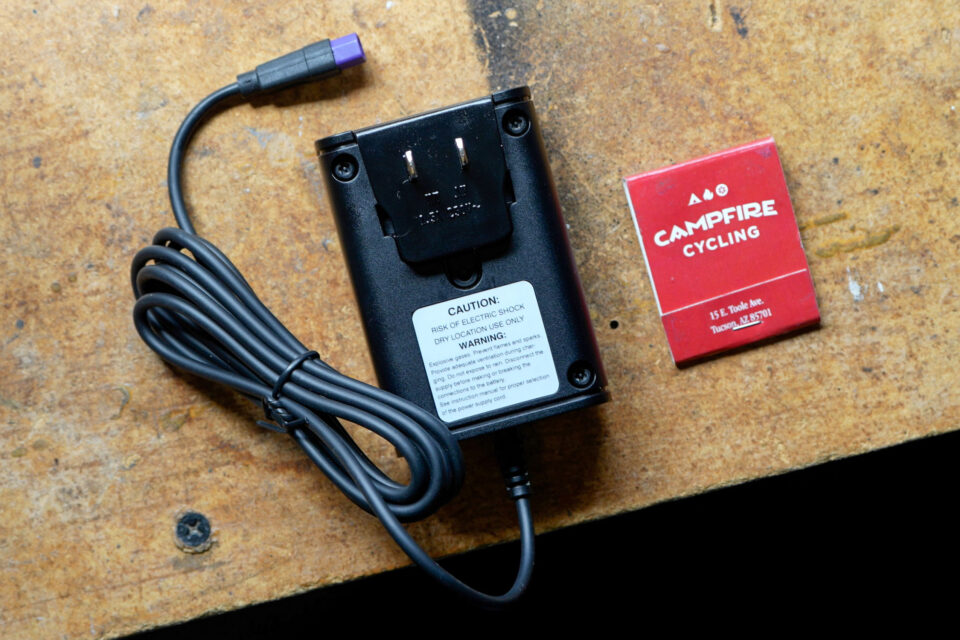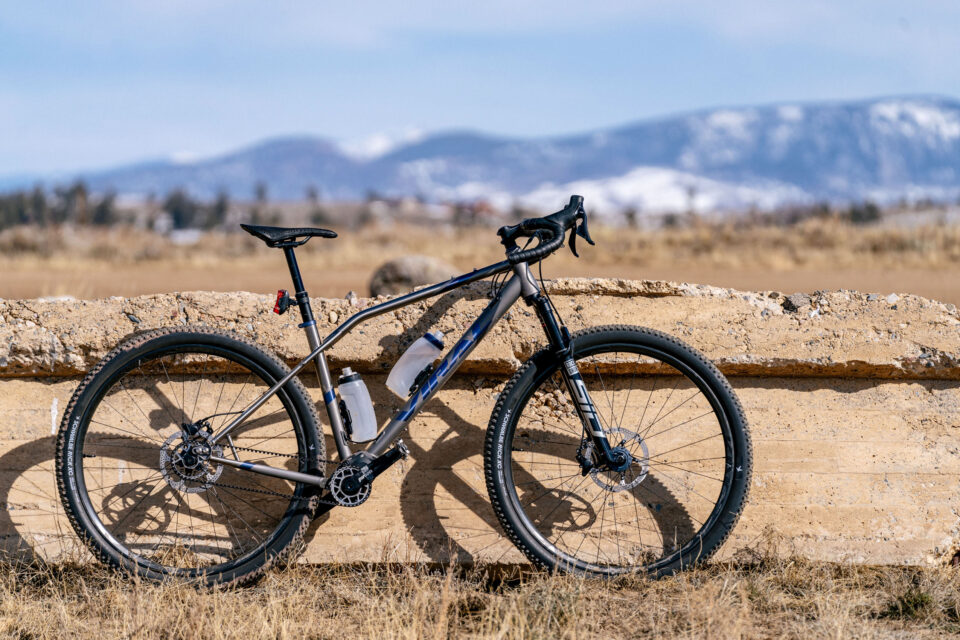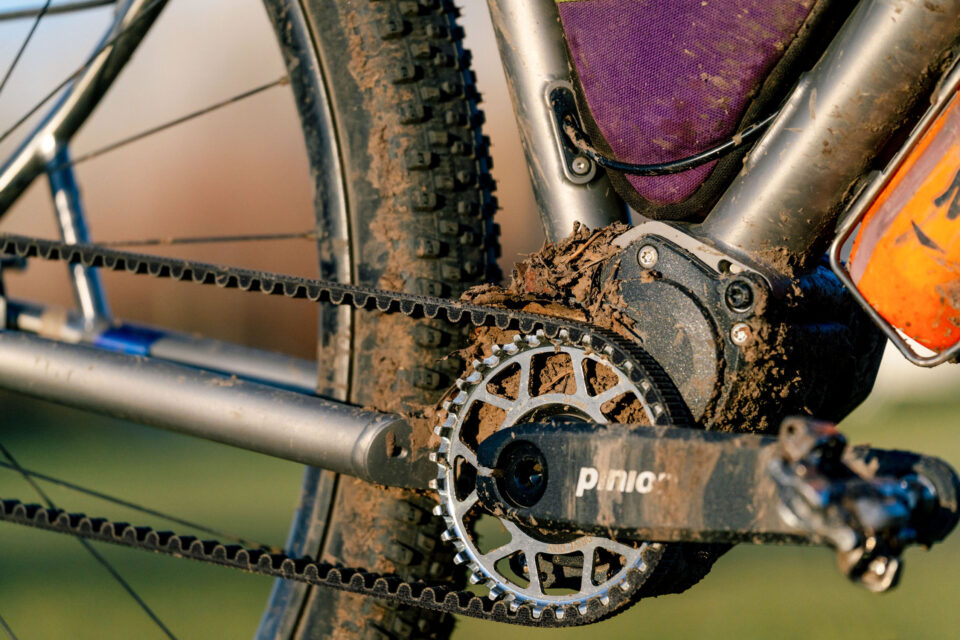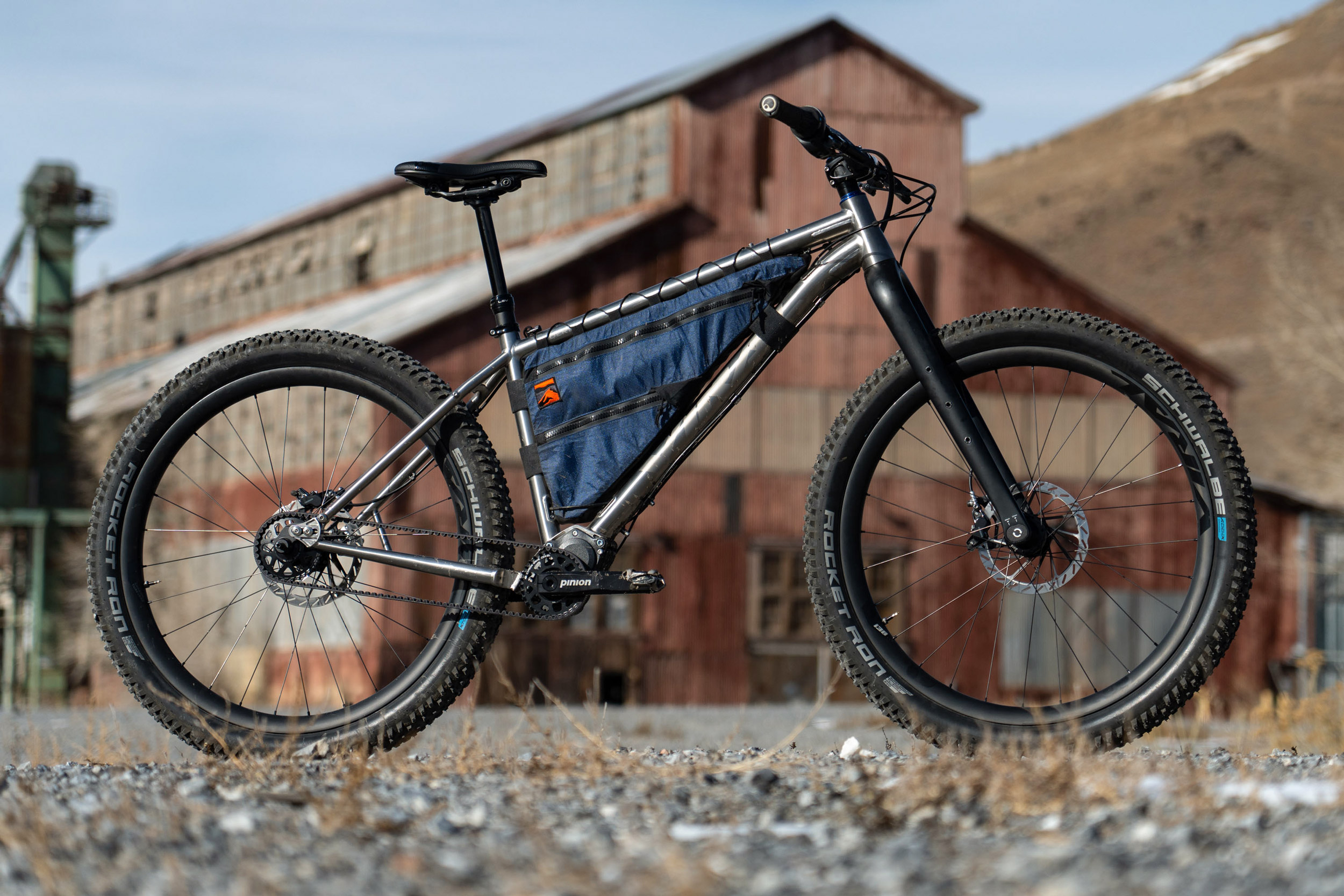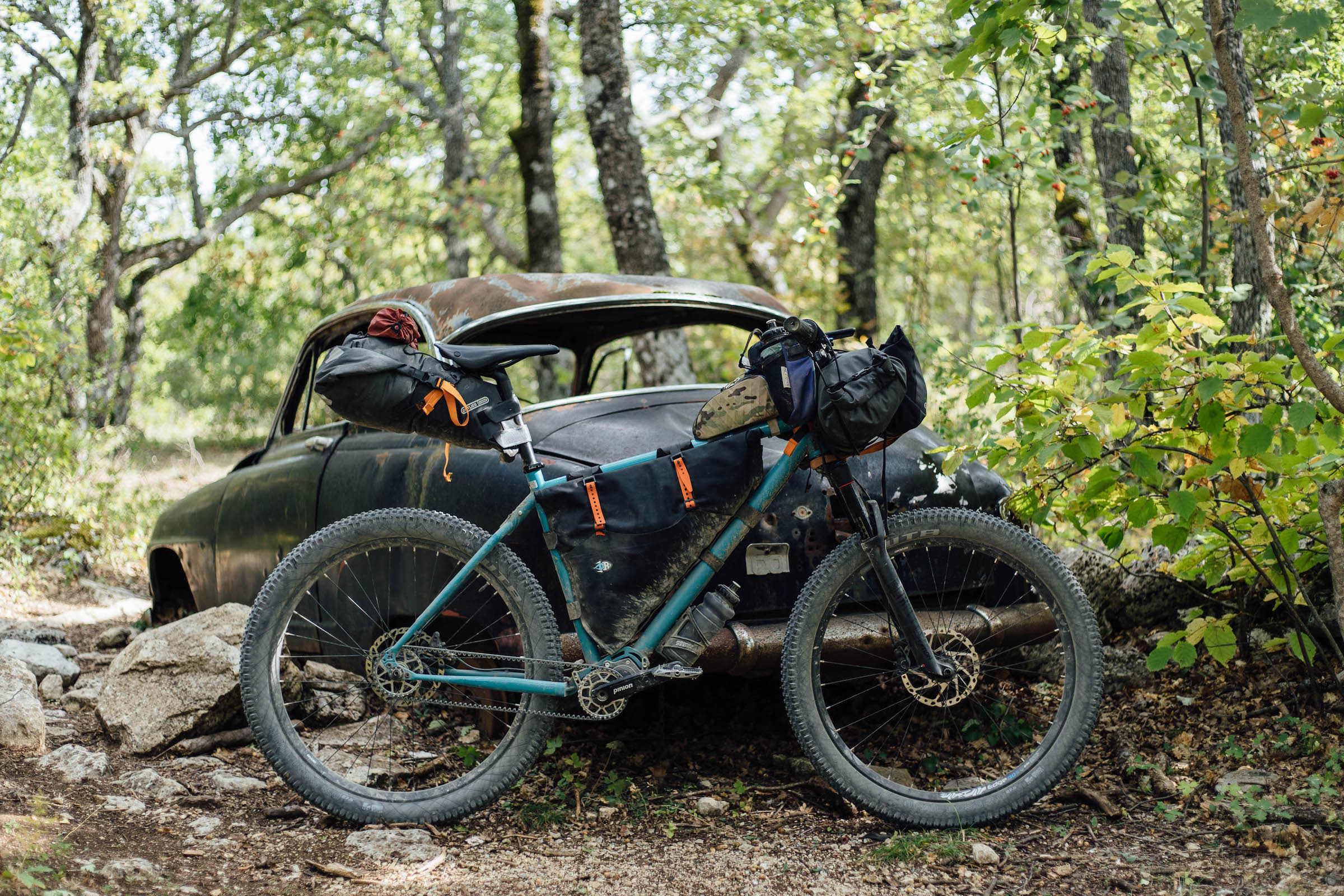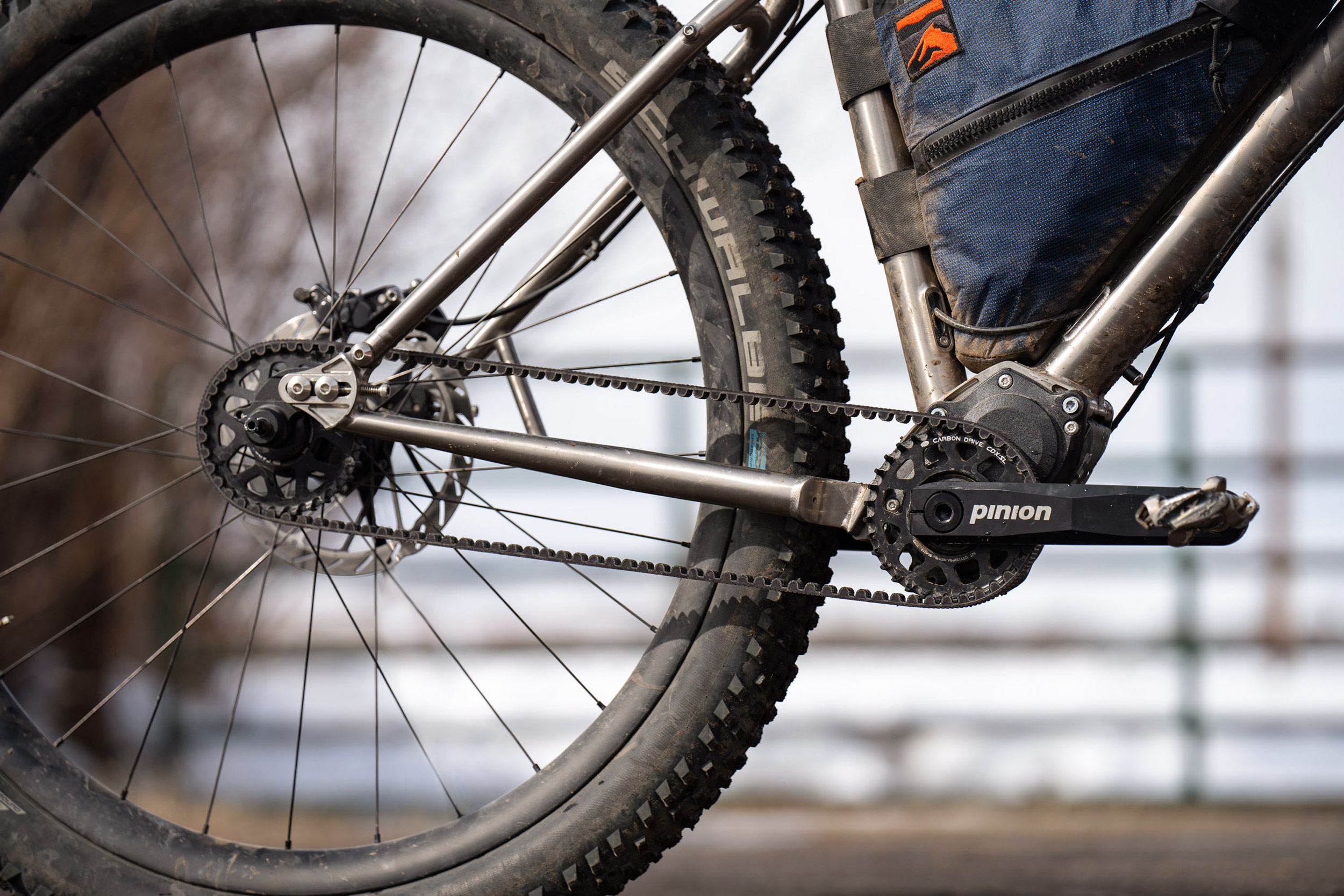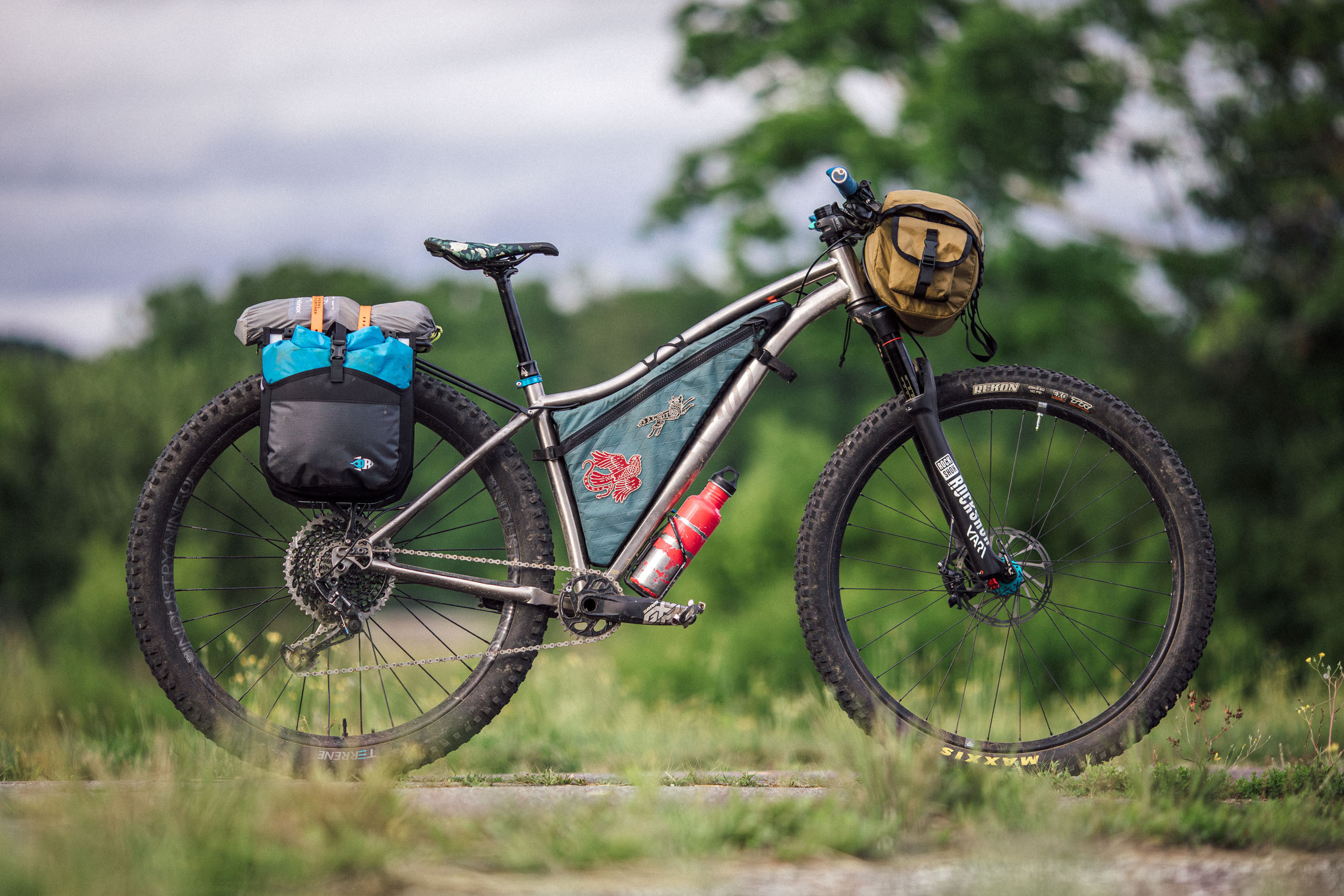Viral Wanderer Review: A Forever Drop-Bar Bike?
The titanium Viral Wanderer is an adventure-focused drop-bar bike built around a Pinion Smart.Shift system. Neil spent several months testing one on off-road rides around Colorado to determine if this uniquely comfortable, durable, and low-maintenance rig could be a true “forever bike.” Find out in his video and written Viral Wanderer review here…
PUBLISHED May 15, 2025
In the spirit of bikepacking, we’re always looking for ways to take the edge off—seeking more comfort, more reliability, and trying to dial in a setup that simply works, even when you or the weather does not cooperate. Over the past several years, Viral has been attempting to deliver exactly that. With the Wanderer, they look to continue that trend. But is the Wanderer really built to wander? In this review, I dig into this interesting bike to see where it shines and if it stands up to the claims made by its maker. You can watch the video below, followed by a written version.
Viral History
For context, the Viral Derive was the first Pinion-equipped bike I tested a few years ago, and I came away really impressed. If you missed my review, which is linked in the Further Reading grid below, here’s a short version of the backstory. Viral was started by Steve Domahidy. Some of you might remember him as one of the co-founders of Niner Bikes nearly two decades ago. He’s been in the bike industry in some way shape or form for over 35 years, and his passion for bikes has yet to slow down. He’s been consulting, designing, making a children’s book about bikes, and of course, continuing to push the limits of what Pinion-equipped bikes can do.

Viral Bikes launched in 2016 and went through a few iterations of hardtails before narrowing down the range. Today, they offer just two bikes: the Derive and the Wanderer, which launched last year. The frames are made overseas, but Viral’s headquarters is now in Bentonville, Arkansas, where the bikes are assembled and shipped out. And although the Wanderer is Steve’s first drop-bar bike under the Viral name, he’s no stranger to this style. Over the years, he’s helped design drop-bar bikes for brands like Factor and Argonaut, but we might say this was his first adventure-forward drop-bar bike, and it offers some neat characteristics, which I’ll explore below.
Pinion Drop-Bar Bikes
Let’s dive into why Pinion make sense for an adventure-focused bike. I actually did a full video on this, which is also linked in Further Reading grid description, but here’s the short version: Pinion was founded in 2006 by Christoph Lermen and Michael Schmitz, two former Porsche engineers who also happened to love mountain biking. They set out to design a drivetrain that shifts as intuitively, precisely, and wear-free as a manual transmission.
To rethink how bikes shift, they created a sealed gearbox that sits low and centered on the bike, keeping the weight between the wheels, unlike the rear-heavy Rohloff hub. That layout changed everything. Pinion bikes aren’t just derailleur-free—they’re built around the gearbox. There’s no traditional bottom bracket shell, crankset, or drivetrain. Instead, the gearbox bolts directly to the frame as one integrated system.
Yes, the Pinion system adds a bit of weight and requires a pinion-specific frame, but the trade-off is almost zero maintenance. Pinion says you only need to change the oil every 6,213 miles (10,000 kilometers). Comparing that to changing out worn parts and cleaning chains, its a nice perk.
Steve told me he wasn’t all that eager to design a drop-bar bike at first, mainly because the pinion grip shifter used on flat-bar bikes doesn’t translate well to drop bars. But once Pinion launched Smart.Shift, with electronic shifting and the ability to shift under load, things started to change. And when TRP came out with the Hywire system, it finally gave Steve a real solution for integrating Pinion into a proper drop-bar setup.The Wanderer was born.
Not all those who wander are lost
The Wanderer is a fitting name for Viral’s latest offering. This drop-bar mountain bike is built for long days, weeks, or even months in the saddle. It’s centered around a Pinion gearbox but also includes a bunch of other thoughtful bikepacking provisions that we’ll get into. But first, it’s worth pointing out that it also comes with a very comfortable titanium tubeset and dialed geometry.
Viral uses triple-butted titanium for their frames, and on the Wanderer, they’ve added a unique titanium spring plate. This design allows the rear end to flex between 7 and 12mm. It’s subtle, but you can feel it take the edge off—especially on chattery surfaces. I’d imagine it works even better for heavier riders.
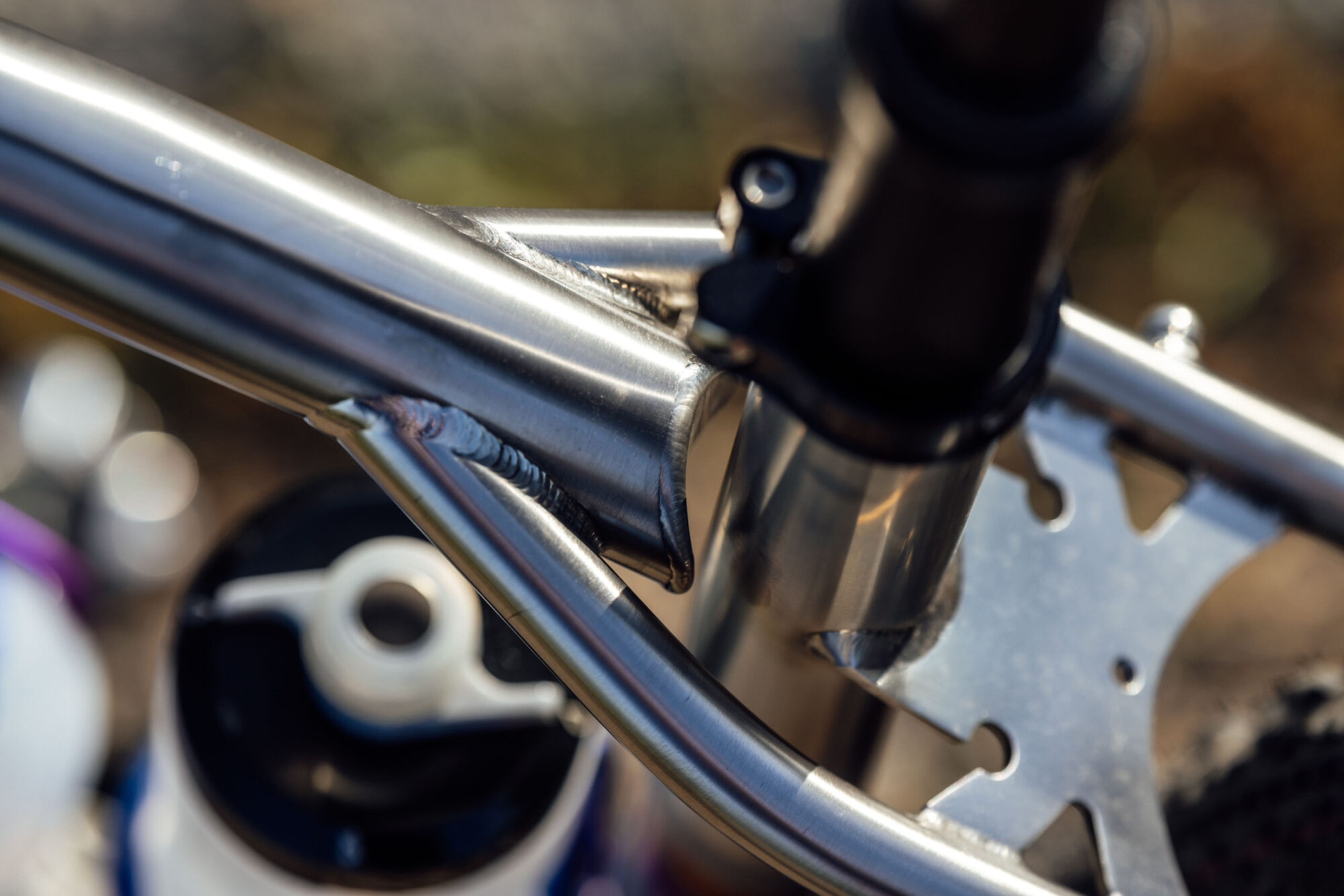
That said, I’ve never seen anything quite like it. While the flex is nice, I think the real benefit is the damping of energy through the entire seat tube. That added damping translates to noticeably more comfort, something I could feel while seated.
The Wander also features a Gates carbon belt drive, five sets of cage mounts in and around the triangle (including two three-pack mounts) and a few bonus bosses near the front of the triangle, giving riders the option for a clean bolt-on frame bag. There are rear rack mounts at the alloy dropouts and seat stays and internal dynamo cable routing for a rear light. Plus the frame space is rather generous. It’s undoubtedly aimed at adventure and to allow for a bit of creativity to load gear.
The Wanderer has boost spacing and clears up to a 2.4” tire, which is the same as bikes like the Salsa Cutthroat. That said, It has solid mud clearance even with 2.25” tires. As you can see here, I have some decent muck caked up near the yoke and still have room to spare. You can squeeze in a 2.6”, but if you’re headed into peanut butter territory, you’re flirting with trouble, so just keep that in mind.
Behind the Numbers
Despite the drop bars, this bike clearly has mountain bike DNA. One of the main reasons I say that is its specced with post-mount brakes. I much prefer this style; they’re infinitely easier to adjust in the field. Post-mount was a priority from the start, since Steve designed the Wanderer to work with a 100mm fork. In this case, a RockShox SID SL, and the frame is built around a 506mm axle-to-crown. That opens the door to running something like the ENVE Mountain Fork or any carbon fork with a similar axle-to-crown. The SID I’m running has a nearly identical measurement at sag, so they’re functionally interchangeable from a geometry standpoint.
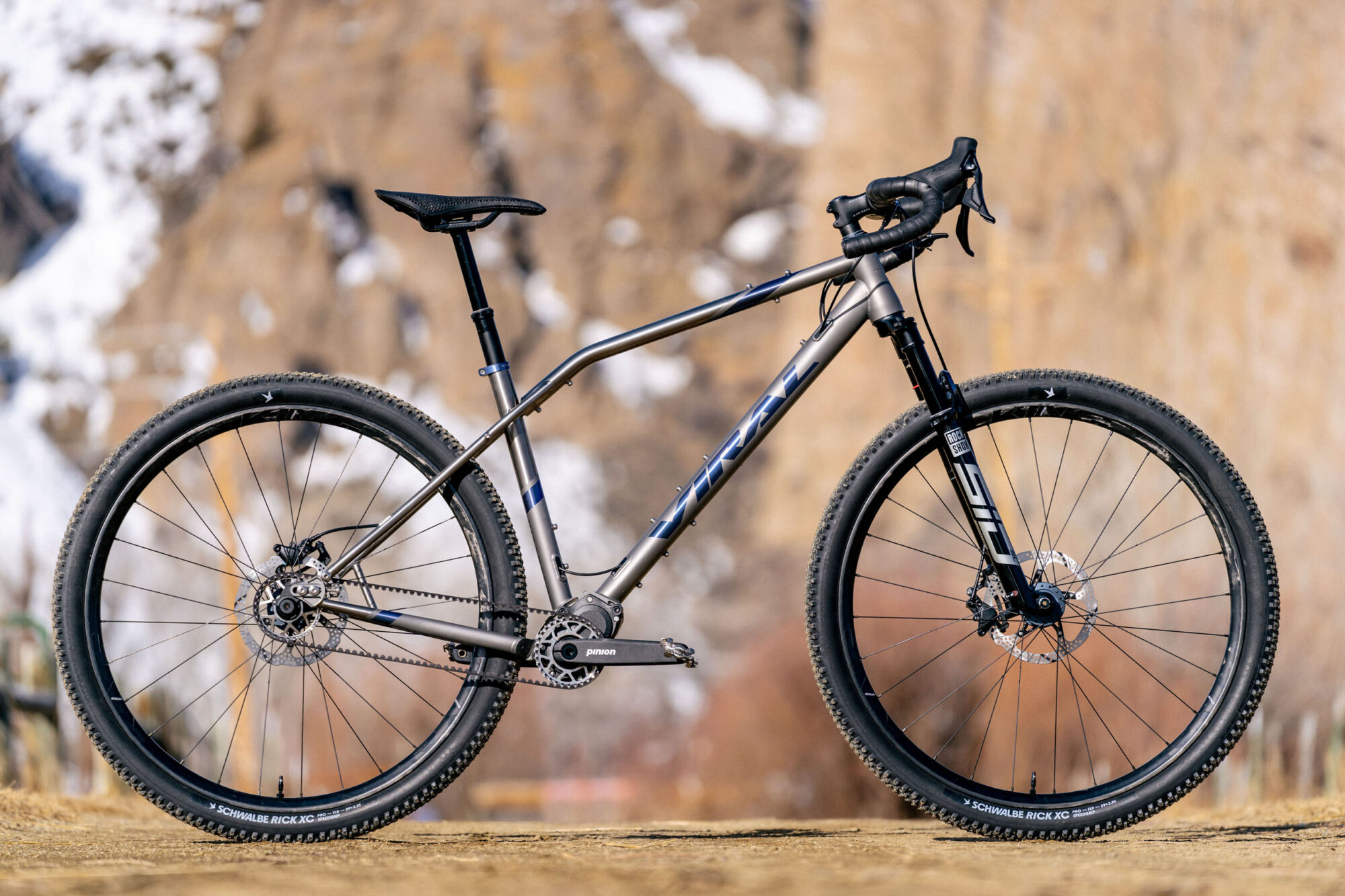
| Size | V2 | V3 | V4 | V5 |
|---|---|---|---|---|
| Seat Tube Length | 400 | 430 | 460 | 495 |
| Top Tube Length (Effective) | 545 | 575 | 610 | 645 |
| Head Tube Length | 90 | 110 | 130 | 145 |
| Chainstay Length** | 435 | 435 | 435 | 435 |
| Front and Center* | 674 | 696 | 734 | 784 |
| Wheelbase* | 1098 | 1122 | 1160 | 1211 |
| Seat Tube Angle* | 76.5° | 75.5° | 75.5° | 76.5° |
| Head Tube Angle* | 67.5° | 67.5° | 67.5° | 67.5° |
| Stack* | 609 | 622 | 641 | 650 |
| Reach* | 401 | 416 | 447 | 491 |
| BB Drop* | 75 | 70 | 70 | 65 |
I tested the size V4. While I could’ve fit on a V3, which is more of a medium, I’m glad I went with the larger one, especially after Steve recommended sizing up. I’m 5’9.5″ with a 32 inch inseam and a +2 Ape Index. I usually start with reach when comparing bikes, and drop-bar MTBs are always tricky to size. I loved the medium Lorax, but the longer reach of the Wanderer didn’t feel excessive. Sure, there were moments, especially when spinning fast on flats, where it felt a bit stretched out and slower to get moving, but on rough descents or twisty singletrack, the stability was very welcome.

This is one of the longer reaches I’ve tried on a drop-bar MTB. Coming in at 447mm with the Stack at 641mm, the bike felt comfortable right away with the saddle centered on the seatpost and a 70mm stem up front. The wheelbase measures 1,160mm, and the chainstays are 435mm in their shortest position. With the belt, though, it landed closer to 440mm as the system is at the mercy of belt and belt ring combos. The head tube angle is 67.5° unsagged and roughly 68° at sag after measuring. The seat tube angle is 75.5° on this size (V4), and it’s size-specific, meaning the geometry puts riders in a similarly balanced position across the size range. I felt solid on everything from steep climbs to long flat stretches and everything in between. And finally, the BB drop is 70mm. Paired with 170mm cranks, the bike felt stable and planted on fast descents and rough terrain while offering a good height to reduce any pedal strikes.
How it Rides
Steve’s goal with the Wanderer was to create the most capable bike he could imagine. In his words: “Some would say a downhill bike is the ‘most capable’ because they’re measuring in terms of ‘getting rowdy.’ That wasn’t my measurement. My measurement for ‘most capable bike ever’ was that it be a Swiss Army knife version of a bike—and not compromise on anything in the process. Road, gravel, mountain biking. It can do it all, and it can do it all deftly.”
Did it deliver?
Frankly after my first ride, I wasn’t totally sold. But here’s why: that ride was mellow, flat, slow and mostly on smooth gravel and pavement. Most bikes handle that kind of terrain just fine. Some feel spunky, others don’t. I would’ve put the Wanderer in the “not-so-spunky” category, at least at first. It wasn’t exactly wandering far from home.
But as things started to melt out here in Gunnison, I got the chance to test it on more rugged terrain, where it clearly felt more in its element. Steep roads, farther-from-home rides, a mix of singletrack, mud, snow, and loose rock. The more I ventured into the unknown, the more the Wanderer came alive.
I capped off my test with an overnighter. It wasn’t anything epic, but riding it loaded just felt right. That weight made the bike feel planted on steep climbs and gave me loads of confidence on fast descents. We even hit snow on a north-facing aspect, and it was the best feeling, shifting without care while grit and grime flew everywhere. With the Pinion, I knew I didn’t have to worry. I just kept going. And thats rarely an okay thing to do with a derailleur hanging in back.

By the end of my test period, I was hammering on the flats and feeling that same snappy, responsive feel I love in a bike. Looking back, maybe that sluggish first ride had more to do with tired winter legs and a freshly tensioned belt drive. After a couple months, it felt fully broken in—and pedaled the way I like: efficient and snappy.
And while I wish I had even more time and miles on it, that final overnighter gave me clarity. The Wanderer is a truly adventure-focused drop-bar mountain bike, maybe the most adventurous. It’s comfortable, durable, efficient—and yeah, it looks the part too. It’s ready for big world-wide adventures, adventures on long routes like the GDMBR, or shorter ones like the Sage and saddles.
Specs and Details
If you haven’t already noticed from a few of the shots, this is as top-of-the-line as bikes get. Not just because the Pinion drivetrain alone is expensive, but because the component choices across the board are high-end. Let’s start with the Pinion. This 12-speed Smart.Shift system runs around $2,000 on its own. Add in the titanium tubeset and other premium parts, and it’s not a cheap bike. Steve knows that. But the idea here is to get a forever bike. And while I know some of you don’t believe in that concept, I know many others do, and I see the Wanderer being as timeless as it gets.
- Fork: SID SL Ultimate 100mm travel or Enve Carbon Boost
- Drivetrain: Pinion C1.12i Smartshift gearbox w/ 600% Range, Gates CDX belt, 32/30t cogs
- Headset: Chris King Dropset
- Stem: Ritchey WCS Toyon 50/60/70/80
- Handlebar: Ritchey WCS Beacon 42/44/46/50
- Brake Lever/Shifter: TRP Hywire w/ post mount brakes, 180mm Centerlock F&R
- Handlebar Tape: Fizik Terra Bondcrush 3mm Tacky
- Seatpost Clamp: Wolf Tooth
- Seatpost: One Up Components V3 120/150/180/210
- Saddle: Fizik Antares R1 Adaptive
- Wheels: Chris King Mtn 30 29”
- Tires: Schwalbe Rick XC Pro 29” x 2.25”
Let’s dive into that drivetrain in more detail. This build was made possible thanks to two key things: the Pinion Smart.Shift system and the TRP Hywire lever. The last Pinion setup I tested was on the Surly Moonlander, and it took some effort to shift. But this TRP setup? It feels surprisingly close to a Shimano GRX Di2 lever. The buttons are responsive, so much so that I use my pinky and shift even when I’m pedaling, and although it’s not quite as crisp or as fast as a finely tuned derailleur drivetrain, it’s a massive improvement over the old cable-actuated versions. Plus, there’s way less cockpit clutter. And with a 600% gear range—an 80% increase over the popular 12-speed drivetrains on the market currently—you have a drivetrain that will get you up, with ease, and also give you some high-end speed.
And yes, I’ll admit, I occasionally find myself between gears, especially at higher speeds in the top end of the range, but just like any drivetrain, a short adjustment period typically resolves the frustration. One quirk I noticed early on: I wanted the shifters reversed. Thankfully, the Pinion Smart.Shift app lets you remap the triggers. It also does a few other things, such as keeping tabs on battery life. Steve sent the charger but told me I wouldn’t need it, and he was right. Pinion claims up to 100 hours or 20,000 shifts per charge, which is another huge benefit.
That said, one downside is the charger itself. If you’re planning a big trip, you’ll need to bring it—and it’s proprietary and kind of bulky. Steve did a great job routing everything neatly on the bike, but it’s still an odd choice for Pinion to go with a Higo six-prong connector just to charge the battery. I would love to have seen a USB-C or something.
As far as the fork, at first, I wasn’t totally sold on the 100mm suspension fork on a drop-bar bike. But the more rugged terrain I explored, the more I appreciated it. Paired with the Wanderer’s capable geometry, it gave the bike an edge on technical trails vs other bikes in its category. Drop bars still don’t inspire the same confidence as flat bars, but this is the closest I’ve felt to a true flat-bar hardtail while riding in the drops. If I were running a rigid fork, I might’ve opted for the V3 instead, but with the suspension fork, the more centralized weight and shorter stem made it feel balanced and controlled.

Another drop-bar bike with a dropper post, yes please. The 120mm post on this bike was just enough, and super glad it came specced with one, even if I never truly loved the lever placement. The 3D-printed Fizik Antares R1 Adaptive saddle was surprisingly comfy. And the Ritchey Beacon bars? Perfect. The shallow drop puts you in a more upright position even when you’re in the drops, which I really appreciate on any bike with front suspension, especially one with 100mm.
Rounding out the build are Chris King wheels. Engagement is fine (though the gearbox adds a slight delay), but I much prefer these over the Onyx hubs I used on my last Viral. Those had a spongy rebound feel I couldn’t get past. Plus, all Chris King rims come with a lifetime warranty, which is always nice. The Schwalbe Rick XC tires rolled fast and hooked up well on firm terrain—less so on looser or slick surfaces, but overall, they were solid performers.
- Model/Size Tested: Viral Wanderer, Size C4
- Actual Weight: 13.33 kilograms (29.4 pounds)
- Place of Manufacture: Taiwan
- Price: $10,195
- Manufacturer’s Details: Viral Bikes
Pros
- Super comfortable-triple butted Ti frameset
- Unique spring plate helps take the edge off
- Drivetrain requires very limited maintenance
- Pinion Smart.Shift/TRP HYWIRE is a game-changer: faster shifting, shift under load, and lasts 100 Hours
- Bikepacker’s dream bike, loads of mounts, feels amazing loaded, and minimal maintenance
- Perfect welds
Cons
- Expensive, high-end build with no real alternative other than buying a frameset
- A touch on the heavier side for this style of bike
- Pinion seems to have more resistance at slower speeds or when less power is applied to pedal stroke
- Awkward/large charger required when going long distances
Final Thoughts
If you asked me to describe what the Wanderer is built for in one word, I’d say adventure. And yeah, I know that’s a little cheesy, but it genuinely fits. Adventures involve a bit of everything, and building a bike that can handle a wide range of terrain and still feel efficient without much daily maintenance is no easy task. This bike isn’t built to win the next big gravel race, and that’s the point. It’s built to suit most riders, on most terrain, with minimal fuss. And I really appreciate that.
It’s been fun to test a few Pinion bikes now, and I’m looking forward to trying more—especially ones that might be a little easier on the wallet. But as a titanium fan, it’s hard to complain about the ride quality here. Paired with the titanium spring plate Steve designed, it really does take the edge off. Combine that with the dialed geometry, top-tier welds, and overall aesthetic, and it’s a dream machine.
The Wanderer full build with the suspension fork comes in at $10,195 with current tariff increase, and that price could shift again. The frame alone starts at $6,295, which includes the Pinion gearbox, belt, and drive rings.
What do you think about the Virual Wanderer? Let me know in the conversation below!
Further Reading
Make sure to dig into these related articles for more info...
Please keep the conversation civil, constructive, and inclusive, or your comment will be removed.







